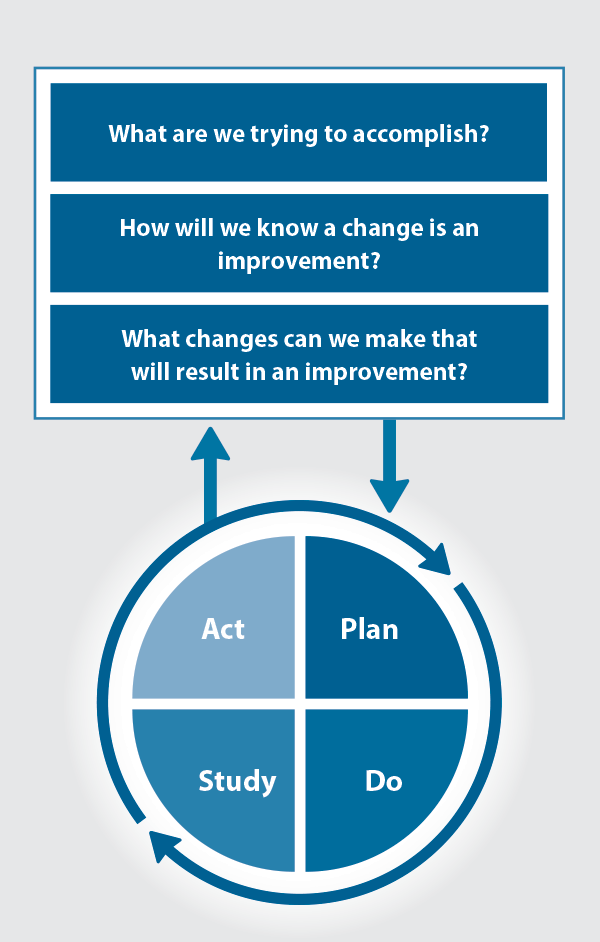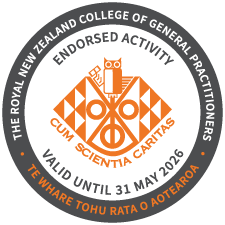Published: August, 2024 | Review date: August, 2027
This audit identifies patients with type 1 and type 2 diabetes and assesses the frequency and extent of their renal monitoring. As an optional extra, patient ethnicity can be analysed to determine if there are disparities in renal monitoring.
Diabetic kidney disease (DKD) is the leading cause of end-stage renal disease in New Zealand.1 Approximately half of all people in New Zealand receiving dialysis have diabetes as the cause of their kidney disease.1 DKD develops in one-third of people with type 1 diabetes and nearly half of people with type 2 diabetes.2
A multifactorial approach is recommended to preserve renal function, prevent renal complications and reduce cardiovascular risk in all patients with diabetes, including those with established DKD. The most important factors in preserving renal function in people with diabetes are:
- Regular monitoring of renal function
- Optimising glycaemic control
- Managing blood pressure
Patients with diabetes should have their renal function tested at least once a year as part of their annual diabetes review. Renal testing should include both:
- An albumin:creatinine ratio (ACR), from a first void urine sample if possible
- An estimated glomerular filtration rate (eGFR), which will be automatically generated when a serum creatinine is requested
More frequent testing, e.g. six-monthly, may be appropriate for people with multiple risk factors for DKD, e.g. Māori or Pacific ethnicity, frequent use of NSAIDs and hypertension.
Māori and Pacific peoples with DKD often have more severe disease. Māori and Pacific peoples are more likely to have kidney disease with moderately to severely increased albuminuria than people of European ethnicity.3 Among those with diabetic kidney disease, two-thirds of Māori and Pacific peoples progress to end-stage renal disease, compared to fewer than one-third of non-Māori, non-Pacific peoples.1 Pacific peoples also have a six-fold higher, and Māori two-fold higher, rate of starting haemodialysis than non-Māori, non-Pacific peoples.1
References:
- Sun T, Davies C, Au E, et al. ANZDATA 46th Annual Report 2023, Chapter 9: Kidney Failure in Aotearoa New Zealand. 2023. Available from: http://www.anzdata.org.au (Accessed Aug, 2024).
- Hoogeveen EK. The epidemiology of diabetic kidney disease. Kidney and Dialysis 2022;2:433–42. doi:10.3390/kidneydial2030038.
- Lloyd H, Li G, Tomlin A, et al. Prevalence and risk factors for chronic kidney disease in primary health care in the southern region of New Zealand. Nephrology 2019;24:308–15. doi:10.1111/nep.13395.
For further information on slowing the progression of renal dysfunction in patients with diabetes see: https://bpac.org.nz/2019/renal.aspx
Summary
This audit identifies patients with type 1 and type 2 diabetes and records the frequency and type of renal monitoring that they are receiving. As an optional extra, the ethnicity of patients can also be recorded to determine if there are disparities in renal monitoring
Recommended audit standards
Ideally, all patients with diabetes will have their renal function tested at least once a year. Testing should include both a urinary ACR and serum creatinine from which an eGFR is generated.
Eligible patients
All patients aged over 20 years with diabetes are eligible for inclusion in this audit. This cut-off was chosen because people with type 1 diabetes who are younger are less likely to be monitored in primary care and type 2 diabetes is uncommon in people aged under 20 years
Identifying patients
You will need to have a system in place that allows you to identify eligible patients and audit their clinical notes. Many clinicians will be able to identify patients by running a ‘query’ through their PMS to find all patients aged over 20 years with diabetes. The notes of identified patients will then need to be reviewed to determine if an ACR and eGFR result has been recorded in the previous 12 months.
Sample size
The number of eligible patients will vary according to your practice demographic. If a large number of results are returned, a sample size of 30 patients is sufficient for this audit. It is likely that the size of the sample will need to be increased if the option of analysing the ethnicity of patients is chosen, depending on the ethnic composition of the practice population.
Criteria for a positive outcome
A positive result is if a patient aged over 20 years with diabetes has a documented result for both an ACR and eGFR in their notes in the previous 12 months.
Data analysis
Record whether each patient has had both an ACR and an eGFR result entered in their notes in the previous 12 months. If a patient has not had an ACR and eGFR result entered in their notes during this time they should be flagged for review. After 30 records have been examined, record the total number of patients that have a “Y” in both the ACR and eGFR column. By dividing the number of patients with a “Y” in both columns, i.e. ACR and eGFR, by the total number of patients, i.e. 30, the ratio of patients with diabetes who are receiving appropriate renal monitoring can be determined.
An optional extra is provided in this audit that allows primary care clinicians to determine if there are ethnic disparities in the renal monitoring of people with diabetes. This is likely to require the sample size to be increased beyond 30 patients to enable meaningful comparisons; the practicality of this part of the audit will depend on your patient population. In a practice with a high proportion of Māori and Pacific patients a sample of 50 patients may be sufficient, however, others may need to sample all their patients with diabetes.
On the second data sheet, record whether both an ACR and eGFR test result has been entered in the patient’s notes in the previous 12 months and record the ethnicity of each patient. In the bottom half of the data sheet, record the total number of patients for each ethnicity with both an ACR and eGFR result in the previous 12 months (AG) and record the total number of patients for each ethnicity (E). By dividing AG by E for each ethnicity the ratio of appropriate renal monitoring for each group can be determined. The monitoring ratios for each ethnicity can then be compared to see if there are ethnic disparities in renal monitoring for people with diabetes.
Clinical audits can be an important tool to identify where gaps exist between expected and actual performance. Once completed, they can provide ideas on how to change practice and improve patient outcomes. General practitioners are encouraged to discuss the suitability and relevance of their proposed audit with their practice or peer group prior to commencement to ensure the relevance of the audit. Outcomes of the audit should also be discussed with the practice or peer group; this may be recorded as a learning activity reflection if suitable.
The Plan, Do, Study, Act (PDSA) model is recommended by the Royal New Zealand College of General Practitioners (RNZCGP) as a framework for assessing whether a clinical audit is relevant to your practice. This model has been widely used in healthcare settings since 2000. It consists of two parts, the framework and the PDSA cycle itself, as shown in Figure 1.

Figure 1. The PDSA model for improvement.
Source: Plan, Do, Study, Act (PDSA) cycles and the model for improvement
1. The framework
This consists of three questions that help define the “what” and “how” of an improvement project (in this case an audit).
The questions are:
- "What are we trying to accomplish?" – the aim
- "How will we know that a change is an improvement?" – what measures of success will be used?
- "What changes can we make that will result in improvement?" – the concept to be tested
2. The PDSA cycle
This is often referred to as the “engine” for creating, testing and carrying out the proposed changes. More than one cycle is usually required; each one is intended to be short, rapid and frequent, with the results used to inform and refine the next. This allows an ongoing process of continuous learning and improvement.
Each PDSA cycle includes four stages:
- Plan – decide what the change to be tested is and how this will be done
- Do – carry out the plan and collect the data
- Study – analyse the data, assess the impact of the change and reflect on what was learned
- Act – plan the next cycle or implement the changes from your plan

Claiming credits for Te Whanake CPD programme requirements
Practice or clinical audits are useful tools for improving clinical practice and credits can be claimed towards the Patient Outcomes (Improving Patient Care and Health Outcomes) learning category of the Te Whanake CPD programme, on a two credit per learning hour basis. A minimum of 12 credits is required in the Patient Outcomes category over a triennium (three years).
Any data driven activity that assesses the outcomes and quality of general practice work can be used to gain credits in the Patient Outcomes learning category. Under the refreshed Te Whanake CPD programme, audits are not compulsory and the RNZCGP also no longer requires that clinical audits are approved prior to use. The college recommends the PDSA format for developing and checking the relevance of a clinical audit.
To claim points go to the RNZCGP website: www.rnzcgp.org.nz
If a clinical audit is completed as part of Te Whanake requirements, the RNZCGP continues to encourage that evidence of participation in the audit be attached to your recorded activity. Evidence can include:
- A summary of the data collected
- An Audit of Medical Practice (CQI) Activity summary sheet (Appendix 1 in this audit or available on the
RNZCGP website).
N.B. Audits can also be completed by other health professionals working in primary care (particularly prescribers), if relevant. Check with your accrediting authority as to documentation requirements.





